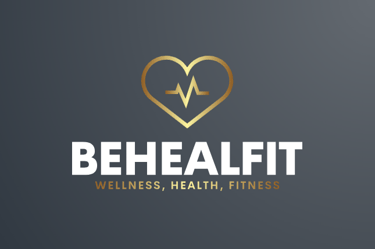Types of Naps: The Ultimate Guide to Boosting Your Day 😴
Discover the different types of naps, their proven benefits, and how to optimize them for maximum energy and productivity.
HEALTHBLOG-LIST
3/18/20253 min read


In short:
There are several types of naps, each with its own advantages.
The ideal duration and time for a nap vary depending on your needs.
A well-planned nap can improve your mood, alertness, and cognitive performance.
Optimal conditions (quiet environment, darkness) maximize the benefits of napping.
Regularly integrating naps can transform your daily life.
The Unexpected Power of Napping
In our fast-paced world, napping is often seen as a luxury, or even a sign of laziness. However, numerous scientific studies reveal the incredible benefits of a short sleep break. Whether you're an athlete looking to optimize your recovery, a student needing a boost for concentration, or simply someone feeling tired, there's a type of nap that suits your needs. This comprehensive guide unveils the different ways to nap, how to make them optimal, and how to fully benefit from them for a more productive and enjoyable day.
Table of Contents:
The Power Nap (or Micro-Nap): The Quick Energy Boost
The Short Nap (or Restorative Nap): Improved Alertness and Mood
The Long Nap (or Royal Nap): For Deep Recovery
The Segmented Nap: A Personalized Approach
How to Optimize Your Nap: Ideal Conditions
Integrating Napping into Your Daily Routine
FAQ: Answers to Your Questions About Napping
Conclusion: Awaken Your Potential with Strategic Napping
1. The Power Nap (or Micro-Nap): The Quick Energy Boost
Duration: 10 to 20 minutes.
Optimal Conditions: Can be done sitting down, in a quiet place. No need for deep sleep.
Benefits: Rapid increase in alertness, improved mood and cognitive performance. Ideal for a mid-day energy boost.
How to Make the Most of It: Set an alarm and try to relax. Even if you don't fall into a deep sleep, simply resting can be beneficial. Avoid exceeding 20 minutes to prevent sleep inertia (feeling disoriented upon waking).
2. The Short Nap (or Restorative Nap): Improved Alertness and Mood
Duration: Approximately 30 minutes.
Optimal Conditions: A quiet and dark environment is preferable.
Benefits: Improves alertness, concentration, mood, and memory. Allows for more complete recovery than a power nap without the drawbacks of a long nap.
How to Make the Most of It: Try to fall asleep quickly. If you have trouble, focus on relaxation. Waking up can sometimes be a little harder than with a power nap, but the benefits are worth it.
3. The Long Nap (or Royal Nap): For Deep Recovery
Duration: 60 to 90 minutes.
Optimal Conditions: A quiet, dark, and comfortable environment is essential.
Benefits: Allows you to go through several sleep cycles, promoting deep physical and mental recovery. Beneficial for memory consolidation and creativity.
How to Make the Most of It: Ideal if you are sleep-deprived or need to recover after intense physical activity. Allow for a gradual wake-up time to avoid a prolonged feeling of grogginess.
4. The Segmented Nap: A Personalized Approach
Duration: Several short periods of sleep spread throughout the day (for example, two 20-minute naps).
Optimal Conditions: Adaptable to your schedule and needs.
Benefits: Can be an effective solution for people with disturbed nighttime sleep or those working shifts. Helps maintain a constant energy level throughout the day.
How to Make the Most of It: Identify the times of day when you feel the most tired and schedule your short naps accordingly.
5. How to Optimize Your Nap: Ideal Conditions
To get the most out of your naps, here are some tips:
Timing is Crucial: Avoid napping too late in the day (after 3 or 4 PM) so as not to disrupt your nighttime sleep. Mid-day is often the ideal time.
Create a Conducive Environment: Choose a quiet, dark, and cool place. Use a sleep mask and earplugs if necessary.
Consistency: Try to nap at the same time each day to regulate your body's natural sleep-wake cycle.
Don't Put Pressure on Yourself: If you don't fall asleep immediately, that's okay. Simply resting can be beneficial.
Wake Up Gently: Set an alarm with a soft sound for a more pleasant awakening.
6. Integrating Napping into Your Daily Routine
Integrating napping into your routine will depend on your lifestyle and needs. Experiment with different durations and find what works best for you. Whether it's a power nap during your lunch break or a longer nap on the weekend, the benefits can be significant.
7. FAQ: Answers to Your Questions About Napping
Is napping good for everyone? Generally, yes, but people with certain sleep disorders should consult their doctor.
How long does it take to fall asleep during a nap? Ideally, a few minutes. If it takes you more than 20 minutes, you may not be tired enough.
Can napping disrupt nighttime sleep? If it's too long or too late, yes. That's why it's important to choose the right duration and time.
What if I feel groggy after a nap? This can happen after a long nap. Try getting up and moving around a bit. Power naps rarely cause this effect.
8. Conclusion: Awaken Your Potential with Strategic Napping
Napping is not a sign of weakness, but rather a powerful tool to optimize your well-being and performance. By understanding the different types of naps and learning how to strategically integrate them into your daily life, you can unlock a new level of energy, focus, and productivity. So, which type of nap will you try today? Share your experiences and questions in the comments below!
